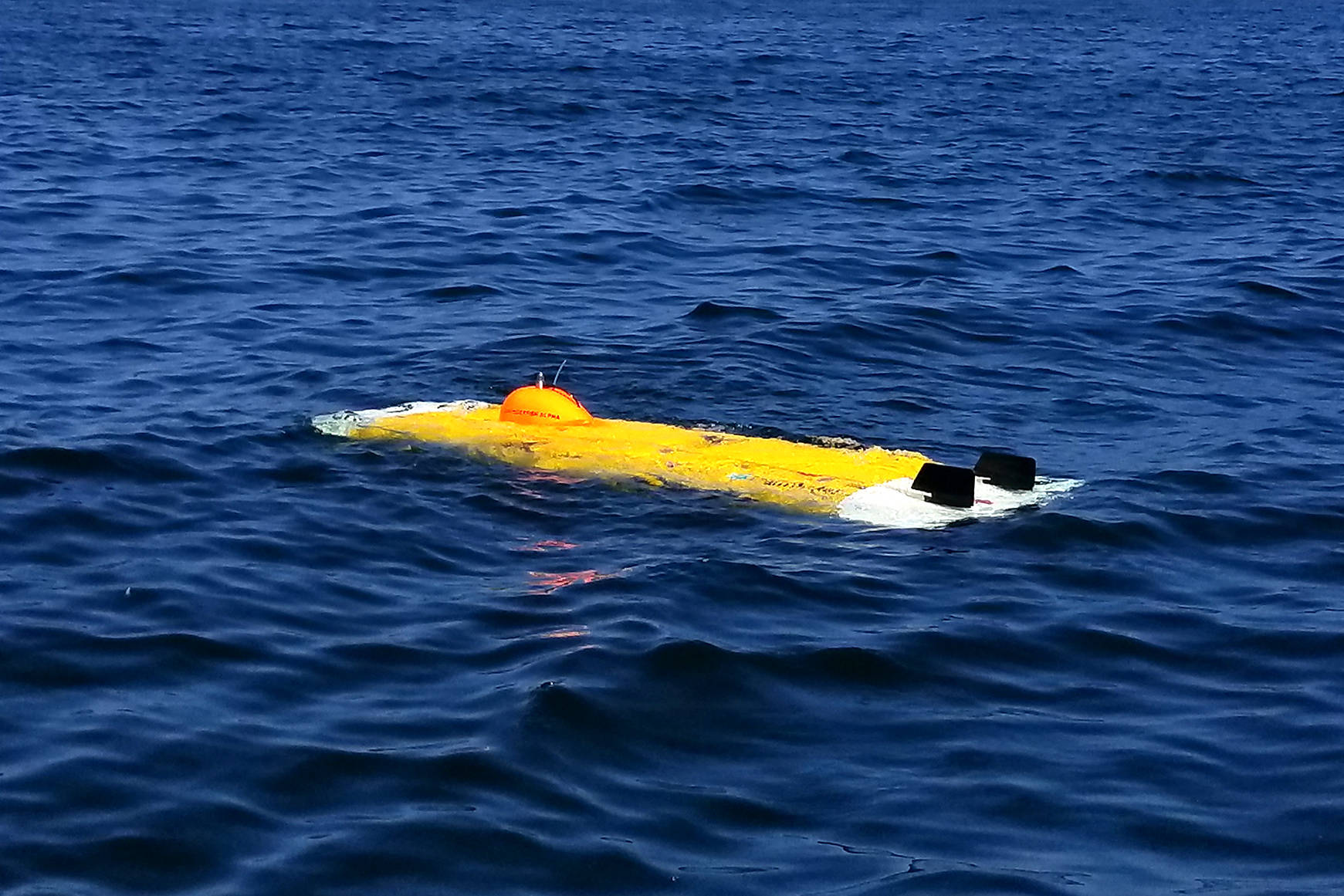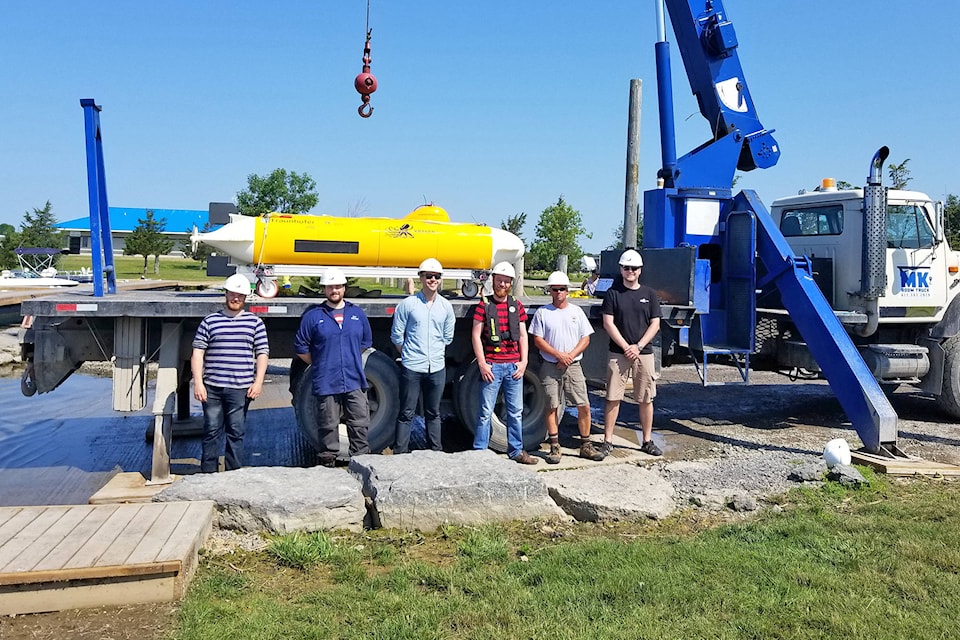A search for underwater treasure has panned out for a Salmon Arm Secondary graduate.
At the bottom of Lake Ontario was a lost piece of Canada’s aviation history – a piece which has now been found.
Nine prototype test-plane models of the infamous Avro Arrow jet were created and launched into Lake Ontario between 1954 and 1957. It was confirmed Sept. 8 that one of the models has been found on the floor of Lake Ontario.
Former Salmon Arm resident David Shea is vice-president of engineering for Kraken Sonar Systems. The Newfoundland-based company has developed a programmable submarine, known as the ThunderFish, an autonomous underwater vehicle (AUV) with an advanced sonar system to allow for searching with far clearer results than traditional sonar.
Shea was previously part of the successful Arctic search for the ships lost in the 1845 Franklin Expedition.
On Friday, July 28, the team from Kraken began work on the Raise the Arrow project, a collaboration between several private companies, including Osisko Mining, working with the Canadian Coast Guard and the Royal Canadian Military Institute to find these scale models. The nine prototypes are roughly one-eighth the size of the full-sized aircraft.
Image of Avro Arrow model captured by Kraken’s AquaPix® Synthetic Aperture Sonar
The team, which includes the scientists and archaeologists, is based in an area near Point Petre.
“We are so proud of our engineers who helped locate an Arrow free-flight model,” says Karl Kenny, Kraken’s president and CEO. Our advanced Canadian ocean technology plays a big part in this story, where our world-class underwater sensors and robotics helped find a piece of Canada’s aviation history.”
The effort has uncovered sonar images, pictures and underwater video of the model. The next step will be to send divers to assess the condition of the model, which will remain submerged until recording and preservation work can be completed. The hope it to eventually bring the model to the surface and where it could become part of the collections at the Canada Aviation and Space Museum in Ottawa and the National Air Force Museum of Canada in Trenton, Ont.
Shea was part of the team searching an area of 64 square kilometres, with Kraken’s AUV moving in a lawnmower-like grid pattern to look for the models.
While the team knew a few details of where the test models were launched and the angle at which they were launched, no one really had much of an idea where they might have landed.
Shea previously told the Observer the Kraken team had a theory that previous search efforts estimated the planes were much farther out in Lake Ontario than initially thought.
“I believe that if we are looking in the right area, we are going to find them,” he accurately predicted at that time.




